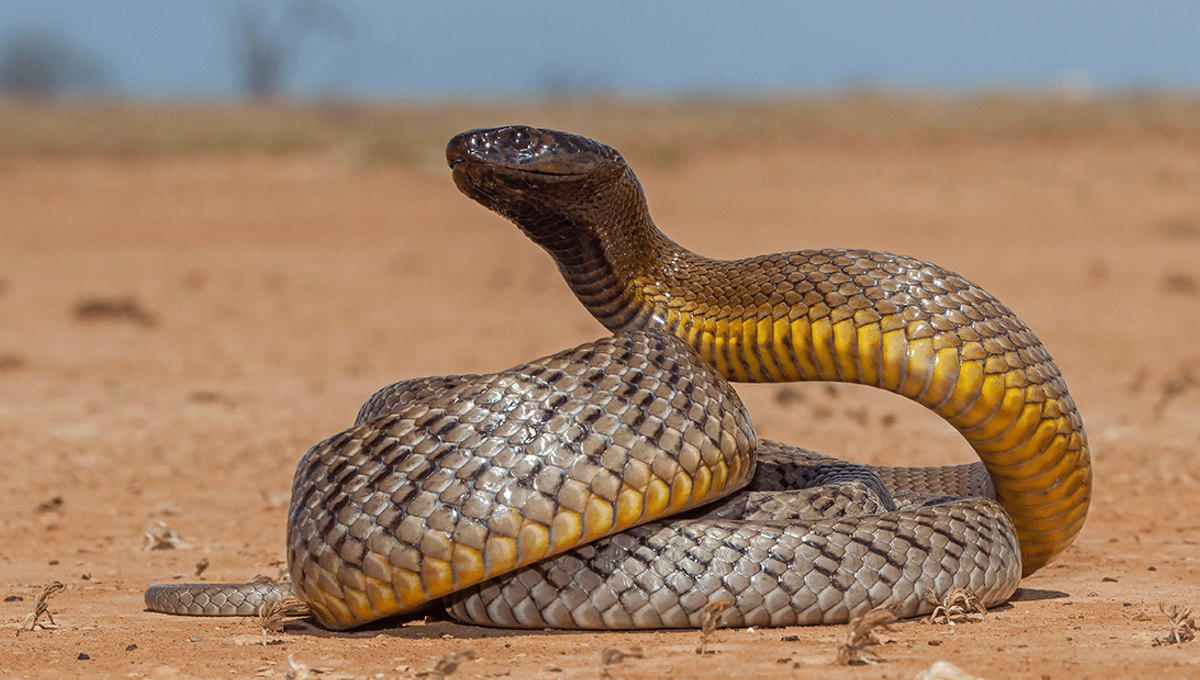
In 1950, a young amateur herpetologist and snake hunter attempted to catch a live specimen of one of the deadliest snakes in the world, to be used in research into developing an antivenom.
Kevin Budden, despite his young age, was an experienced snake hunter. Local papers had written of his hobby of catching venomous snakes, after he caught 59 in a year while being bitten “only five times” requiring urgent treatment.
Aged 20, he and two colleagues went to Queensland to attempt to capture a taipan – a fast, highly venomous and deadly group of snakes, for which there was no antivenom. While in the scrub, Budden was able to capture a 1.8-meter (6-foot) taipan. However, as he was putting the snake into a bag it broke free and was able to bite him on the thumb.
Keeping his cool, he was able to grab the snake with his other hand and place it into the bag. He carried the snake to a road, where he hitchhiked while holding a deadly snake for which there was no antivenom. Budden was in urgent need of medical treatment, and was taken to be seen by doctors, but urged the truck driver to take the snake – the only live specimen that had been caught thus far – to the researchers developing the antivenom.
The specimen he captured and sent to researchers was shipped to Melbourne, where it was instrumental in creating an antivenom in 1955. Budden did not fare so well.
“Unfortunately the 20-year-old man who collected that snake purely for the purposes of research was bitten by that snake,” University of Queensland venomologist Bryan Fry, who looked at samples of the venom 80 years later and found it to still be potent, told Brisbane Times.
“So, of course, there’s a catch-22 that when you’re catching the snake to be the very first to be used for antivenom production, it is the very last snake in the world you want to be bitten by, because there’s no antivenom.”
On his arrival at hospital, Budden’s doctors thought him full of “bravado and excitement, showing greater interest in the welfare and comfort of the reptile than himself”. He believed that victims of snakebites died of “fright” rather than the venom, and had not cut off the wounded thumb because it “wasn’t worth the trouble”.
Budden was given tiger snake antivenom, which helped with the clotting effect of the snake’s venom, but could not deal with its effect on the nervous system. He began to vomit yellow fluid, develop headaches, and his muscles started to weaken. As the night went on, he found he was unable to move his tongue or swallow, and his mouth “gaped and its floor sagged under the effects of gravity”.
Doctors had thought he would recover at first, but he died the next day after a night of respiratory support. Since the antivenom was developed thanks to his efforts, there have been no recorded deaths resulting from a bite from a taipan.
Source Link: The Scientist Who Died While Helping To Create An Antidote To The Snake That Bit Him